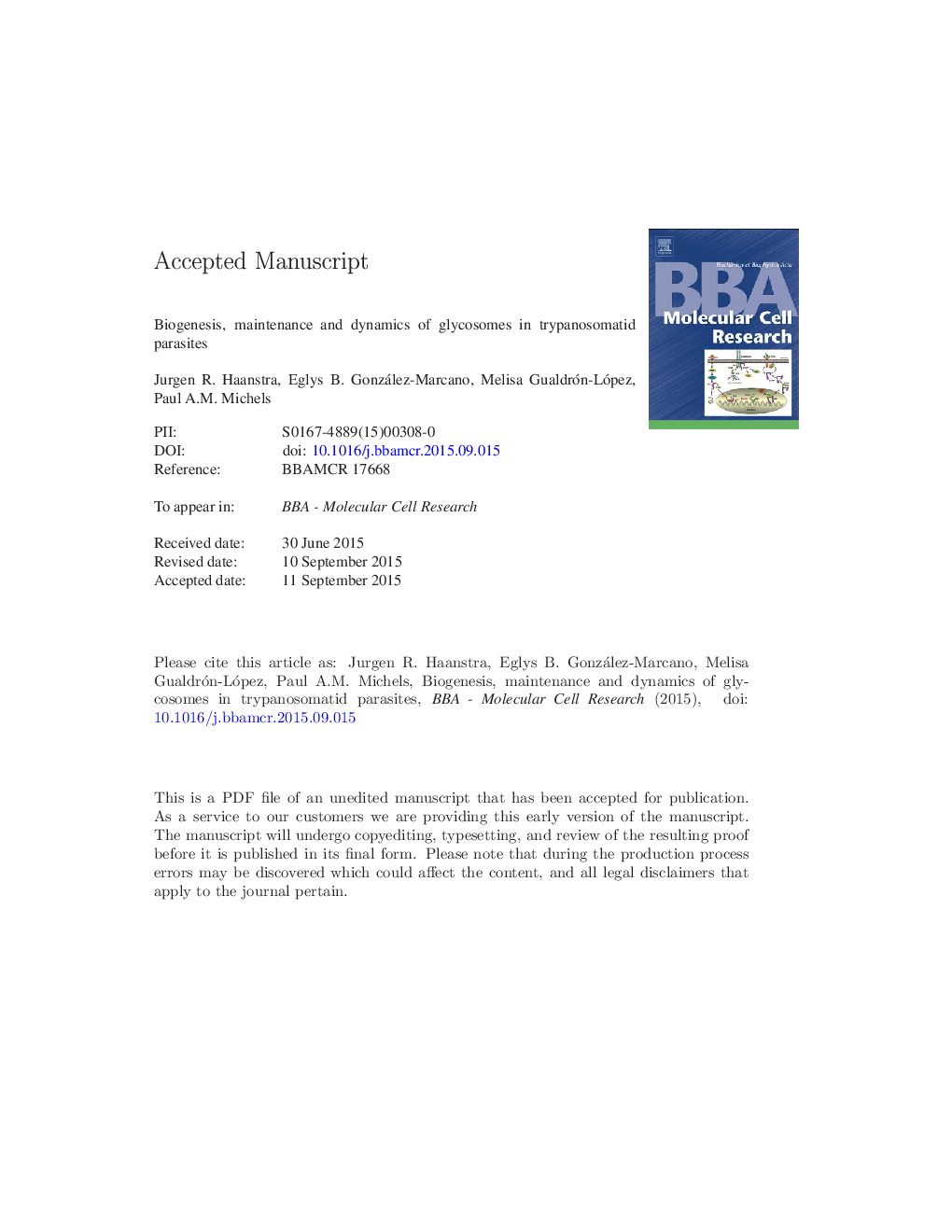| Article ID | Journal | Published Year | Pages | File Type |
|---|---|---|---|---|
| 10801703 | Biochimica et Biophysica Acta (BBA) - Molecular Cell Research | 2016 | 38 Pages |
Abstract
Peroxisomes of organisms belonging to the protist group Kinetoplastea, which include trypanosomatid parasites of the genera Trypanosoma and Leishmania, are unique in playing a crucial role in glycolysis and other parts of intermediary metabolism. They sequester the majority of the glycolytic enzymes and hence are called glycosomes. Their glycosomal enzyme content can vary strongly, particularly quantitatively, between different trypanosomatid species, and within each species during its life cycle. Turnover of glycosomes by autophagy of redundant ones and biogenesis of a new population of organelles play a pivotal role in the efficient adaptation of the glycosomal metabolic repertoire to the sudden, major nutritional changes encountered during the transitions in their life cycle. The overall mechanism of glycosome biogenesis is similar to that of peroxisomes in other organisms, but the homologous peroxins involved display low sequence conservation as well as variations in motifs mediating crucial protein-protein interactions in the process. The correct compartmentalisation of enzymes is essential for the regulation of the trypanosomatids' metabolism and consequently for their viability. For Trypanosoma brucei it was shown that glycosomes also play a crucial role in its life-cycle regulation: a crucial developmental control switch involves the translocation of a protein phosphatase from the cytosol into the organelles. Many glycosomal proteins are differentially phosphorylated in different life-cycle stages, possibly indicative of regulation of enzyme activities as an additional means to adapt the metabolic network to the different environmental conditions encountered. This article is part of a Special Issue entitled: Peroxisomes edited by Ralf Erdmann.
Keywords
TPIPTSATGPCFTriosephosphate isomeraseHXKPFKPEXPGAMPGKGAPDHTCAGFPperoxisomal-targeting signalCAAPMPBSFtetratricopeptide repeatAutophagytricarboxylic acidBiogenesisHuman African trypanosomiasisTurnoverTPRprocyclic formPhosphofructokinasephosphoglycerate mutasephosphoglycerate kinasehexokinasePADPeroxingreen-fluorescent proteinperoxisomal membrane proteinFluorescent proteinpyruvate kinasePYKHATglyceraldehyde-3-phosphate dehydrogenaseGlycosomesGlycolysis
Related Topics
Life Sciences
Biochemistry, Genetics and Molecular Biology
Biochemistry
Authors
Jurgen R. Haanstra, Eglys B. González-Marcano, Melisa Gualdrón-López, Paul A.M. Michels,
